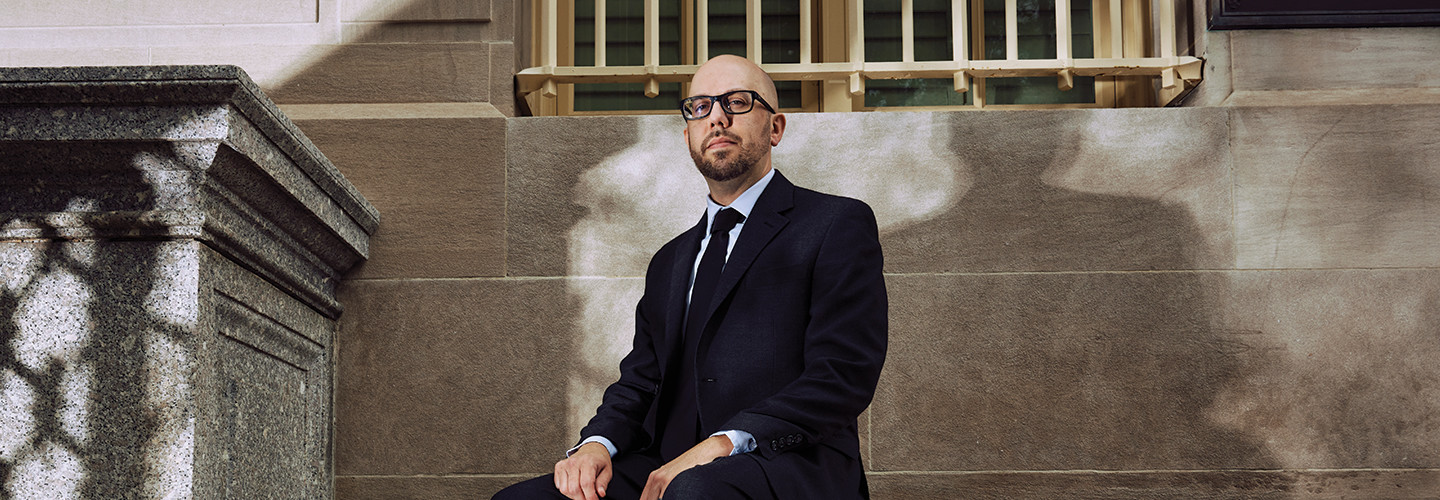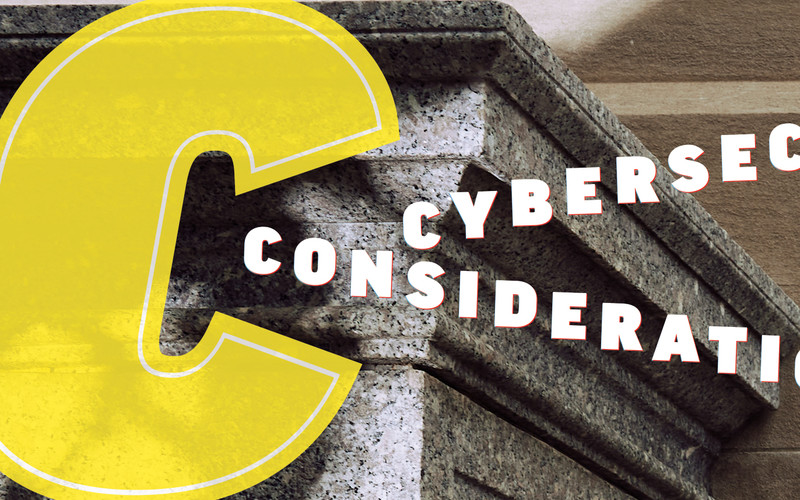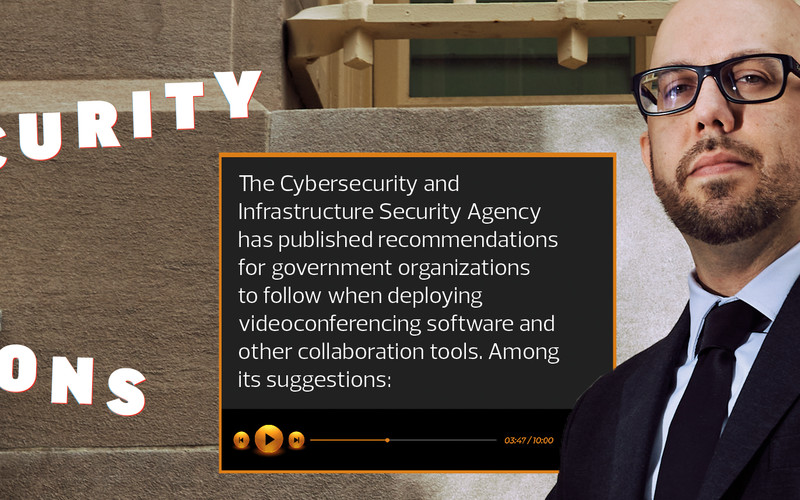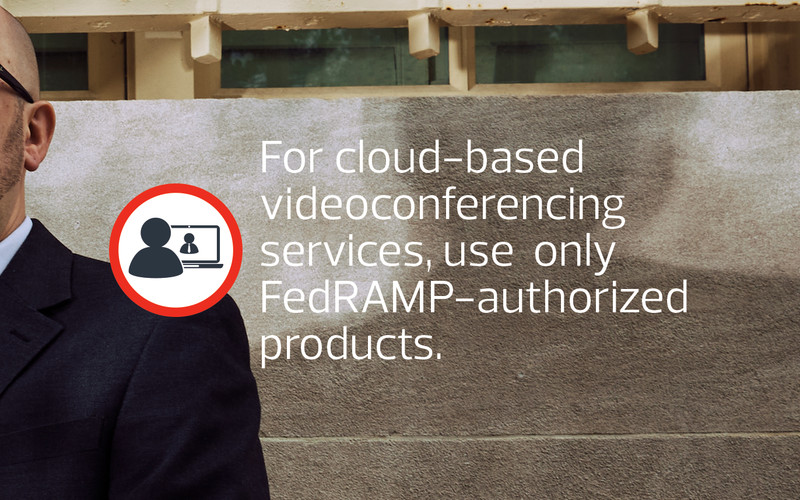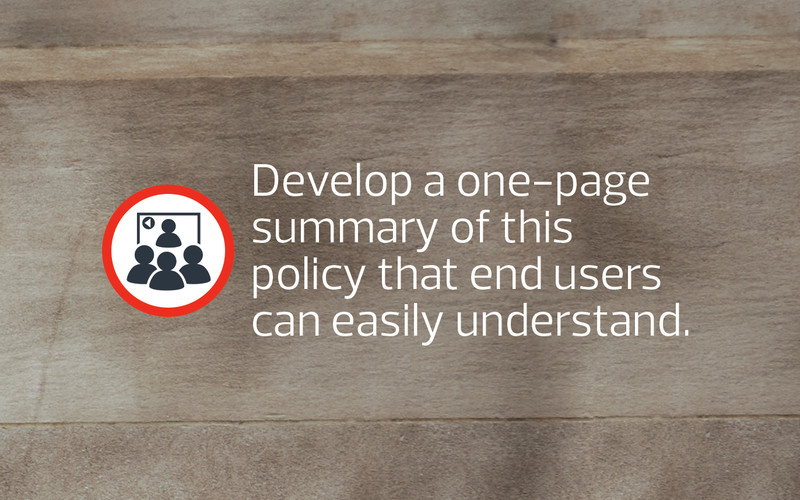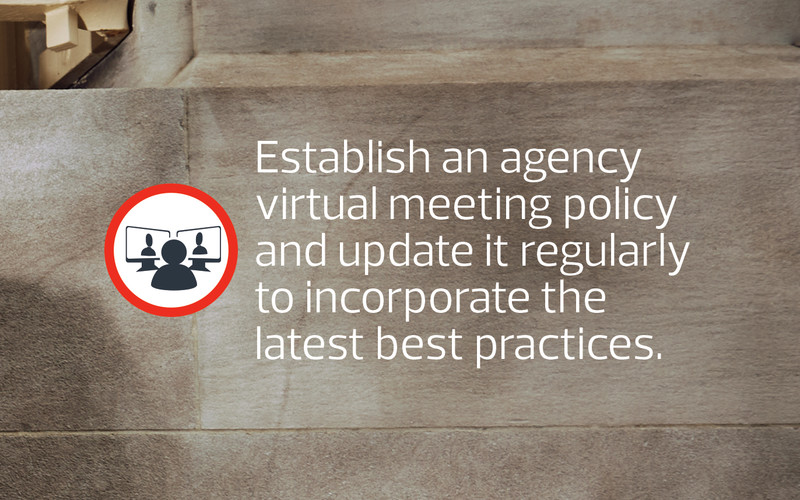With the possible exception of lawyers, most people would do almost anything to avoid spending time in a federal courtroom. But there’s good news for those who have with dates at the U.S. Court of Federal Claims. Today, with the judge’s permission, it’s possible to attend those hearings remotely.
In fact, says IT Director Chris Warner, the USCFC has offered videoconferencing for years. Before the COVID-19 pandemic, however, the technology was used only occasionally.
“If somebody had to be brought in from a place like California, that’s when it proved very useful,” Warner says, noting that USCFC’s only building is located in Washington, D.C. “Our courtrooms aren’t necessarily convenient if you live thousands of miles away.”
As it did to organizations everywhere, COVID-19 forced the court to shift the majority of its operations to a virtual environment. Courtrooms are now designed to allow the use of multiple videoconferencing tools, including Zoom and Cisco Webex, among others.
Post-pandemic, business at USCFC is mostly back to normal, Warner says. But courtrooms still contain everything they need to host participants from anywhere in the world, and remote and hybrid hearings have become far more routine.
Each room at the USCFC now includes large-screen monitors, microphones and cameras at the judge’s bench and counsel tables, says Courtroom Technology Coordinator Brandon Kolpak. Document cameras allow lawyers and witnesses to easily display paper items, and HDMI and VGA connections are provided for sharing images and audio from attendees’ laptops.
Those in the room, Kolpak notes, can communicate seamlessly with anyone who is not, as long as the offsite participants have similar technological capabilities. It’s his team’s job to ensure that’s the case prior to any scheduled hearing conducted by videoconference.
“Especially compared with three years ago, it’s fairly straightforward,” Kolpak says, no matter what platform a person wants to use. “I’d like to think that we’re pretty accommodating. We want to make sure that people can get to court.”
Click the banner below to learn how Backup as a Service boosts data protection.
Teleconferencing Remains Convenient for Citizens
Months after the federal government officially declared an end to the COVID-19 public health emergency, the Court of Federal Claims is only one of the agencies that have made teleconferencing a regular part of the citizen experience.
According to a MeriTalk survey, nearly 9 in 10 federal IT leaders have taken steps within the past year to make it easier for citizens to interact with agencies. Many now say that work set them up to provide virtual services well into the future.
READ MORE: The VA and other federal medical agencies are expanding their use of telehealth.
Taxpayers, for example, can use Microsoft Teams to meet with the IRS Independent Office of Appeals, and citizens can use the same platform to attend hearings with the Social Security Administration.
Likewise, the Department of Education hosts virtual Federal Student Aid training conferences for financial aid professionals, and nonprofits and private businesses that partner with federal agencies can attend the National Institute of Health’s Federal Environmental Symposium either in person or virtually.
At the start of the pandemic, recalls Dr. Kevin Galpin, executive director of telehealth services in the Office of Connected Care at the Veterans Health Administration, “we made the organizational pivot to say that we would deliver as much telehealth to veterans’ homes as we possibly could.”
The agency took a technology that it had previously used in only a limited capacity — VA Video Connect — and quickly deployed it to veterans and VHA providers across the country. Today, the VHA is on track to host more telehealth encounters in 2023 than it did in 2022, Galpin says.
He thinks virtual care’s growing popularity with veterans is due in part to the effort the agency made to improve the design and functionality of its videoconferencing platform, but he also gives credit to something even simpler: the fact that telehealth is relatively easy.
“Providers can be in their homes, veterans can be in their homes — it’s just a great option,” Galpin says. “It’s not for everything, but for a lot of care, it makes it really convenient for veterans to get what they need.”
DIVE DEEPER: Find out how to make sure remote connections are secure.
Veterans Rely on Videoconferencing for Benefits Hearings
Another VA agency, the Veterans Benefits Administration, has seen similar success with two videoconferencing initiatives of its own.
At the VBA’s Outreach, Transition and Economic Development program, the Visitor Engagement Reporting Application allows veterans to schedule virtual or in-person appointments at regional VBA offices.
OTED’s mission, explains Regina Yount, assistant director of enterprise contact operations, is to help veterans succeed as they make the sometimes difficult transition from the military to civilian life. Many live in rural areas, making in-person meetings inconvenient. Today, these veterans can have meetings by phone or videoconference if they choose.
“In the past, they may have had to drive for two hours to get to their appointment,” Yount notes. “I just think they’re happy they can engage without having to get in the car.”
Videoconferencing is also gaining ground at the VBA’s Medical Disability Examination Office. The MDEO ensures that veterans who’ve filed disability benefits claims receive timely compensation and pension exams in cases where the those are deemed necessary.
Prior to 2020, says MDEO Deputy Director Mary Glenn, the vast majority of C&P exams were conducted in person. That changed at the onset of the pandemic as the office encouraged the vendors with which it contracts to provide telehealth exams whenever possible.
“COVID certainly made us start thinking about out-of-the-box ways to provide exams,” Glenn explains. Veterans who didn’t have a smartphone or computer were mailed loaner tablets they could return when they were done. Those who needed audiological exams to test for hearing loss also received a special set of headphones.
Post-pandemic, most C&P exams are again provided face to face, but videoconferencing remains an option when feasible and appropriate.
“For us, it’s about trying to be veteran-centric,” Glenn says. “It’s a way we can expand access to the nation’s veterans while improving satisfaction with the exam process.”
FTC Webcasts Provide Citizens an Avenue for Public Input
The importance of being citizen-centric is something April Tabor understands well. As secretary of the Federal Trade Commission, Tabor oversees the agency’s public meetings and adjudicative proceedings.
The FTC has always allowed the public to attend its internal bimonthly meetings, but before the pandemic, citizens could only do so if they were in Washington. COVID-19 forced the agency to adapt to ensure these events remained open to anyone who was interested, so it turned to Zoom and webcasting, Tabor says. It soon became clear the agency was on to something good.
“It helped us amplify our voice,” she explains, giving credit to FTC Chair Lina Khan for initiating the change. “It allowed us to hear from more consumers in real time and increase the transparency that we already had about our work.”
Long before COVID, the FTC had an established virtual presence, producing everything from virtual press conferences to online workshops and webinars. The new open meetings concept simply took this “to a whole new level,” Tabor explains.
Exactly one week after the Department of Health and Human Services announced that the national health emergency had reached its end, the FTC streamed its May 18 open meeting online. Those who clicked on the agency’s link watched Khan and others conduct business live, and some provided oral or written comments that later wound up in the public record.
Noting that open meetings are here to stay, Tabor says she’s looking forward to many similar events in the future.
“At the end of the day,” she says, “these meetings have been a huge boon, not just for the Federal Trade Commission but also for the people we serve.”


